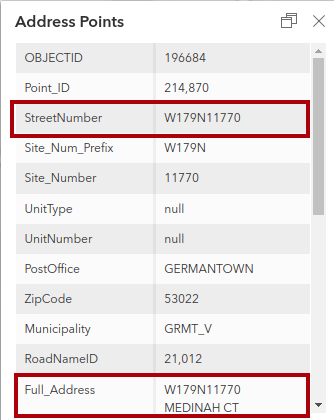As I mentioned in another reply, there are two address points in the source data at the same location (as near as can be determined visually) here. I think we agree that, baring some insight from local authorities to the contrary, both should be represented in the final data to be imported - although that is an imperfect solution. Here is the source data for one of them (I have outlined the relevant parts in red):

My contention is that this should be tagged in OSM as:
addr:housenumber=W179N11766
addr:street=Medinah Court
(plus other relevant tags)
Here is the source data for the second one:

My contention is that this should be tagged in OSM as:
addr:housenumber=N117W17890
addr:street=Augusta Court
(plus other relevant tags)
This approach is similar to how the address to the northwest was handled by the importers. Here is the original source data for this address:

Here is how this address was tagged in the proposed import data:

In fact there are 74,657 addr:housenumber tags that have a similar format (JOSM query “addr:housenumber”~“[1][0-9]+[NSEW][0-9]+.*$”) in the proposed import data out of a total of 163,290 addresses.
So my suggestion as to how the first two addresses should be tagged is consistent with the way the rest of the data in the proposed import is being handled.
NSEW ↩︎